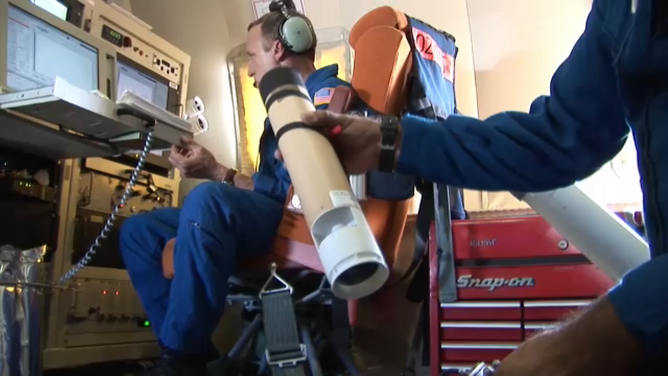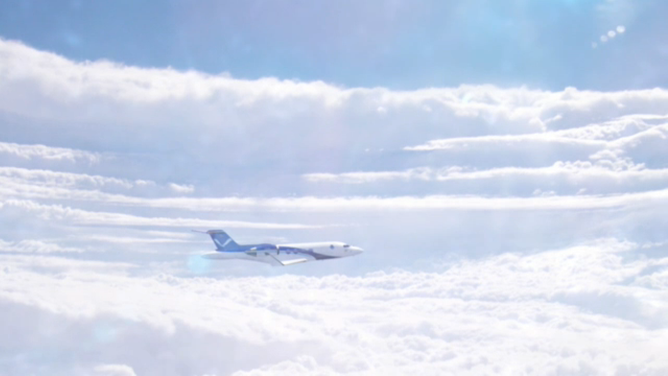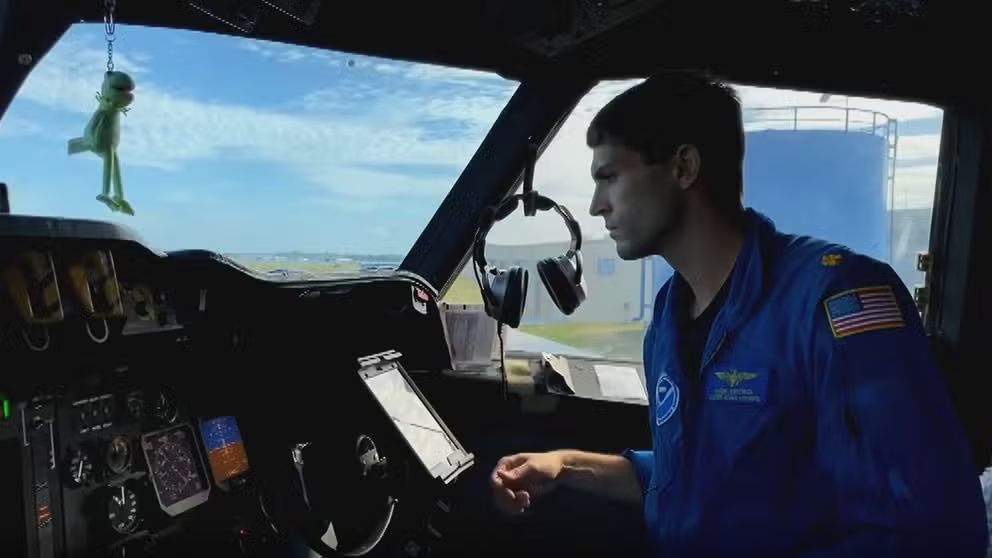Inside the 'flying laboratory' used by NOAA's Hurricane Hunters
This aircraft helps meteorologists refine their hurricane forecasts
Inside the 'flying laboratory' used by NOAA's Hurricane Hunters
Inside the ‘flying laboratory’ used by NOAA’s Hurricane Hunters.
Hurricane season runs from June 1 to Nov. 30, but there’s an elite group from the National Oceanic and Atmospheric Administration that makes preparing for storms a year-round effort.
Hurricane Hunters use turboprop airplanes to fly through some of the worst weather on the planet. Their mission is to gather valuable first-hand data for meteorologists at the National Hurricane Center so that they can fine-tune their forecasts.
"Obviously, the job that we perform is a little more hazardous than what other normal aviation does," said Navy Lt. Cmdr. Adam Abitbol, one of the pilots of the Hunters’ aircraft.
Scientists onboard
Aboard Abitbol’s P-3 Orion airplane are other aviators, scientists and researchers. One of them is Ashley Lundry, a NOAA flight director.
"I'm the flight meteorologist on the aircraft," Lundry said. "So not only do I fly on the aircraft, I do a lot on the ground, but for a mission, I'm actually responsible for the weather. So when I come into work, I put the forecast together."
"I brief our crew before we even step foot on the aircraft what the weather is going to be, what the mission requirements are and the plan to accomplish that," she added.
‘Flying laboratory’
Abitbol described the plane as a "flying laboratory," packed with instruments aimed at collecting all that data.
"We have a three-dimensional Doppler radar," Abitbol said. "We also have a multimode radar, and those give us different pictures of the storm."
Also aboard are one of the most important instruments for the mission — dropsondes. These are sensor devices that are dropped into various parts of a hurricane or tropical storm to measure what Abitbol called "atmospheric state variables."

NOAA scientists prepare a dropsonde during a Hurricane Hunter flight in this undated image.
(NOAA)
"So pressure and temperature, winds, humidity, and so we get that information in that radio signal back to the plane then we pass that off right to the National Hurricane Center," Abitbol said.
The dangers
The job of the Hurricane Hunters is a perilous one. The dynamics of tropical systems can make it difficult to control an aircraft, but Abitbol said the pilots train for those kinds of situations to mitigate the risks.
Abitbol recalled flying through Hurricane Patricia in 2015. It later became the most intense hurricane ever recorded in the Western Hemisphere.
"It had 879 millibars central pressure, which is a really strong, deep storm, Cat. 5, 220 mph winds," Abitbol said. "It was a pretty good ride. It rocked us pretty good."

A jet used by the National Oceanic and Atmospheric Administration flies over a hurricane in this undated image.
(NOAA)
For Lundry, concentrating on her job helps keep her nerves in check.
"I don't know that I really get scared," Lundry said. "I think I'm just constantly in the back of my mind knowing that I'm responsible for watching the radar and hoping that every decision that I make is the best decision for the crew and for the aircraft."
